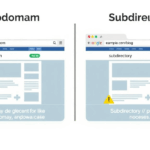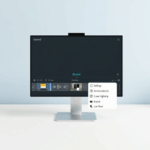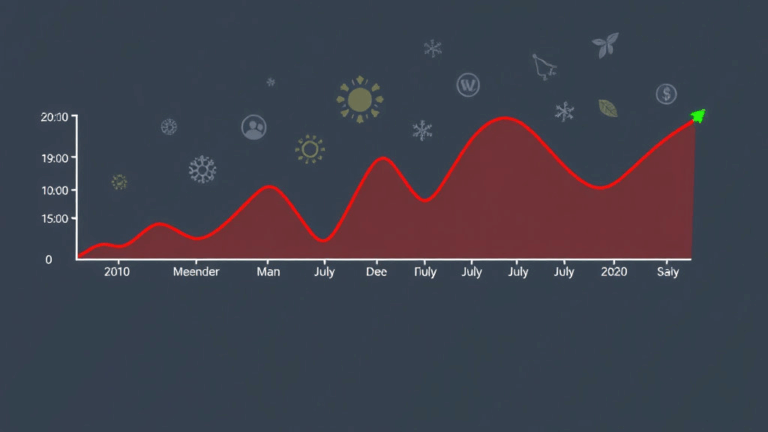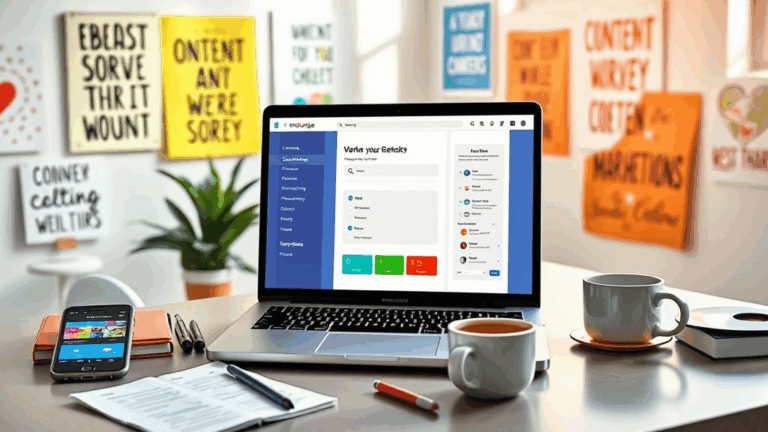Building a Personal Brand on Blogger Without Breaking AdSense
Getting a Custom Domain Working with Blogger DNS Logic
If you’ve never wrestled with Blogger’s half-documented DNS dance, it goes something like this. You buy a domain—let’s say from Google Domains or something like Namecheap—and you think: cool, I’ll just paste it into Blogger and it’ll work. Spoiler: it won’t. Blogger spits out two obscure CNAME records you need to add manually, and misses telling you upfront that your apex (@) DNS needs an A record pointing to Google’s IPs to work with non-www subdomains.
What tripped me up was the fact that Blogger only validates the domain after the correct CNAMEs resolve *and* the A record resolves the apex. So you’ll think you’ve done everything right, but the redirect will just fail silently. And fun fact: those A records aren’t shown anywhere in the setup flow, but they’ve been the same four IPs for over a decade. I keep them in a ghost Gist file just to avoid the endless who-am-I-Googling spiral.
“Why does it need A records if I’m only using www?” Because Blogger randomly tries to forward apex requests unless you disable that in the settings. It’s opt-out behavior tied up in a UX sentence everyone skips.
AdSense Integration and the ‘Pending Review’ Limbo
So here’s where nine out of ten people get stuck when turning Blogger into a real monetized blog: AdSense doesn’t play nicely with it anymore. Yes, Blogger has an old-ass ‘Monetize’ tab that implies instant AdSense magic — but that’s a lie now. That connection pipeline seems left over from the 2013 version of the dashboard. If you create a new Blogger blog now and try to use AdSense from there, it kicks you into the new AdSense UI, which then promptly shunts your blog into the “site review queue”… where it sits. For days. Or weeks.
One of my personal sites just hovered there for ~19 days before I realized the actual issue: Blogger’s default template structure sometimes causes empty <head> or doubly nested <meta> tags that AdSense sees as malformed. Not invalid. Just “not great bot food.” I stripped every widget, cleaned up the theme with that basic Contempo skeleton, re-added the AdSense script manually (don’t use the built-in widget), saved, waited another day — boom, approved the next morning.
Trick that finally worked
<script async src="https://pagead2.googlesyndication.com/pagead/js/adsbygoogle.js"></script>
<script>(adsbygoogle = window.adsbygoogle || []).push({});</script>
You’d think Blogger would clean its own HTML better. But nope, AdSense bots act like HTML validators from 2009 when processing Blogger themes. Also, the placement of the analytics and ad script tags before the </head> is important — not after they’re shoved in with widgets. Order matters. Learned that only after diving into the AdSense status JSON API.
Why Page-Level Ads Flake Out on Some Blogger Layout Themes
You’re using Blogger, so you pick a nice visual theme that vaguely matches your vibe — Grid, Soho, whatever. But then AdSense’s Page-level ads (particularly anchor ads and vignettes) just… don’t show. Or they show once and then vanish forever. But they still chew up your page impressions in the stats.
This isn’t just a load order quirk. Some Blogger templates inject client-side DOM elements after the DOMContentLoaded event, which messes with how the script decides where to render anchors. Basically, AdSense checks window size and layout readiness too early, and flags the page as malformed. In Grid theme specifically, this means your mobile layout might never get ads even if it’s physically wide enough.
Major aha moment: switching to a custom template with a minimal structure — even an older HTML5 base design — made the ads fire consistently. Turns out the default Blogger themes defer or asynchronously construct page wrappers in a way that AdSense wasn’t designed for.
Tracking Consistent Earnings When RPM Swings Like a Moodboard
Here’s the part no one tells you about using Blogger + AdSense for personal branding: your RPM (revenue per 1000 impressions) will fluctuate wildly unless you babysit your traffic sources. One month you’ll get mostly US organic traffic and feel like you’re printing lunch money. Next month it’s 80% Pinterest hits from Brazil and you’re making pennies off a portfolio post that went viral for the wrong reason.
I’ve learned to correlate short-term RPM dips with malformed traffic. Here’s how:
- Install a UTM parser on your own links in Linktree/Bio sites. Clean traffic boosts RPM.
- Use Cloudflare’s free analytics to compare crawler vs. human pageviews.
- Watch the “Active View” percentage — low scores suggest layout issues or rendering slowdowns.
- Check if ad units are firing properly in Lighthouse. Zero visibility means zero ad revenue.
- Set your category block list carefully — some categories have brutal eCPMs (like politics).
- Use responsive ad formats where possible — fixed-size units wreck mobile RPM.
I once noticed that swapping a horizontal banner (728×90) on the homepage with a square responsive unit in the sidebar jumped my RPM by like 60-something percent in two weeks. Probably because the new unit started picking up relevant verticals it had been ignoring before. AdSense is moody like that.
The Blogger HTTPS Redirect Trap That Breaks AdSense Crawling
Oh man. This one cost me six hours of my life and at least three cups of reheated tea. If you enable HTTPS in Blogger (which you should), it defaults to redirecting all traffic from HTTP. Awesome, right? Except AdSense’s verifier sometimes fetches with old agents that don’t properly follow HSTS chains on newly issued free SSL certs.
In my case, the “site unreachable” error that had stalled my AdSense approval was actually due to Cloudflare DNS + Blogger’s auto-HTTPS combo returning a 301 but no response body. The actual log showed:
{
"status": "UNREACHABLE",
"reason": "Empty Response",
"timestamp": "23:12 UTC",
"source": "fetch_inspector"
}
Fix was disgustingly easy once I stumbled into it: go into Blogger’s Settings, find the HTTPS Redirect toggle, and flip it off temporarily. Re-initiate a site crawl from AdSense sidebar after clearing cache. Wait fifteen minutes. Flip it back on.
That’s not written anywhere. Google doesn’t even surface this as an error type in the AdSense dashboard — just “Needs Attention”.
Brand Consistency When You’re Stuck with Blogspot URLs
If you can’t or won’t spring for a custom domain, but branding still matters to you, get creative. One thing I did for a now-defunct side gig: I made all public-facing links go through a branded short link domain (via Bitly Pro) and just routed everything to the blogspot.com URL under the hood. It made everything look tighter, and you can control every click redirect.
Also, modify the favicon and theme name in the HTML editor. Otherwise hovering over a branded link shows “Powered by Blogger” with a random generic site name in the tab. You can change that via:
<b:if cond='data:blog.url == "/"'>
<title>YOUR BRAND NAME HERE</title>
</b:if>
That hack replaces the homepage tab title but keeps post-title generation intact. You might need to tweak the widget title setup if your theme overwrites it dynamically.
One-Off Post Drafts Can Tank Homepage Ad Performance
This took me so long to correlate I literally made myself a spreadsheet. If you schedule or draft posts with malformed HTML, it doesn’t just affect that post — it can inject layout-breaking elements into the homepage stream. Which sometimes results in collapsed ad containers or layout shifts that kill viewability scores on the grid or post-stream ads.
I had a draft post where I pasted a malformed <iframe> snippet from an IG embed. Even though the post was unpublished, since the theme I was using loaded an excerpt preview of upcoming posts in the recent block, that broken script was still being evaluated and rendered partial DOM garbage on the homepage. Which… totally tanked my Active View and caused CTR to flatline without looking broken at all.
Disable highlighted post previews if you’re doing autofeed blocks — it’s a silent killer when testing raw embeds or JS snippets.
Fix was just deleting the post entirely and recreating from a Notepad copy, ironically.














